Archive
Walter Sanders
- Walter
- Sanders
Walter Süssman, Walter Suessmann, Walt Sanders
- 27-07-1897
- Szczecin (PL)
- 21-05-1985
- München (DE)
- Photographer
Walter Sanders was a German émigré photographer. In 1938 he arrived in New York, where he worked from 1939 until the end of his life for the Black Star agency and, from 1944, for Life magazine.
Word Count: 33

Portrait of Walter Sanders, Cuba, Havana, 1938 (Estate Walter Sanders). 
Walt Sanders and Alfred Kornfeld, son of Black Star cofounder Kurt Kornfeld. Sheldrake Lake, New Rochelle, NY, November 1939 (© Heirs of Kurt Kornfeld). 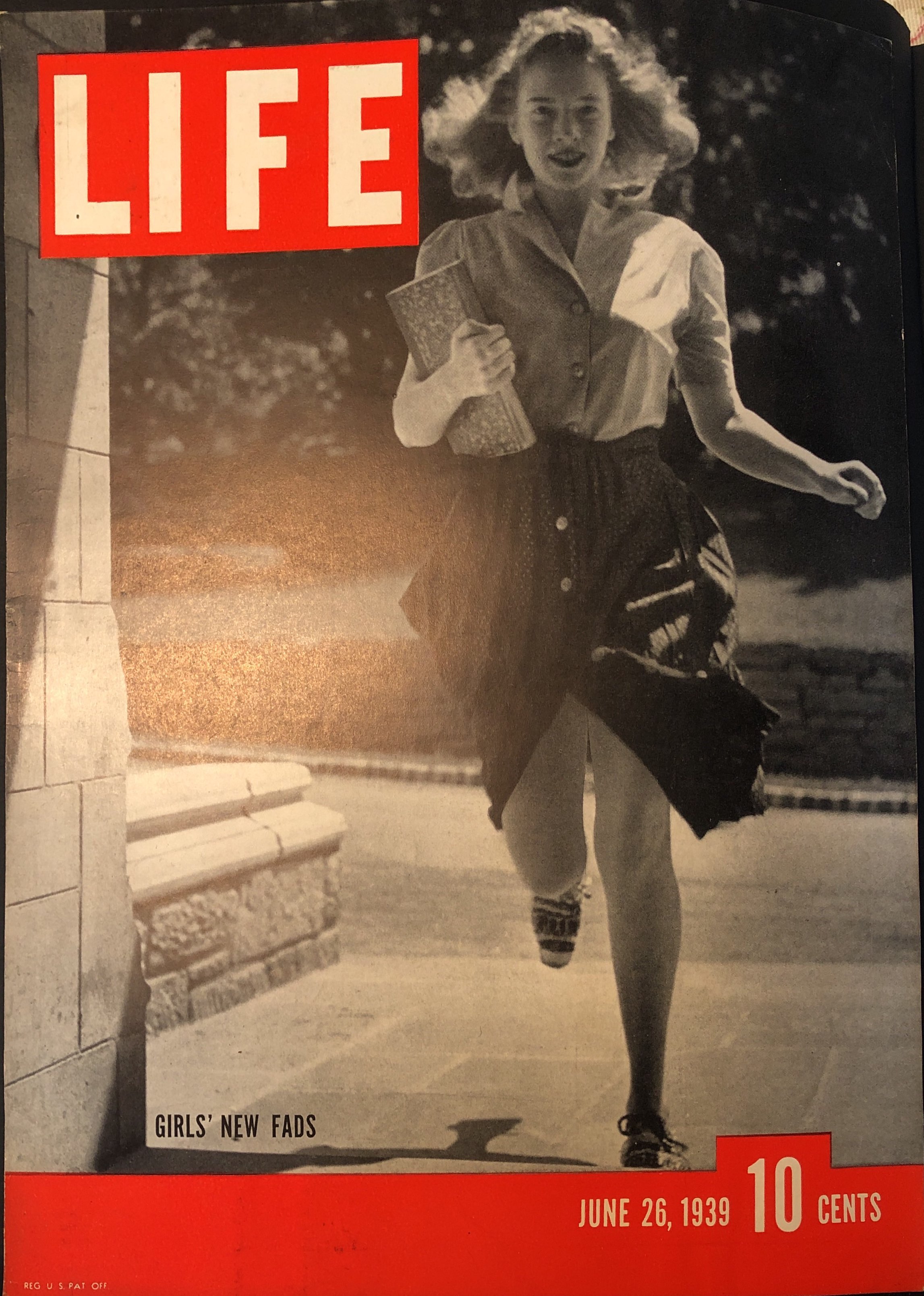
First cover by Walter Sanders for Life, 26 June 1939 (Estate Walter Sanders). 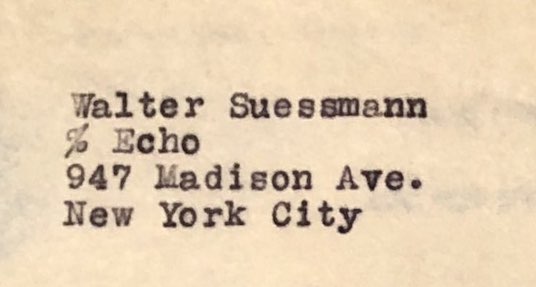
Letterhead with name Walter Suessmann, a reference to Echo and an address (Estate Walter Sanders). 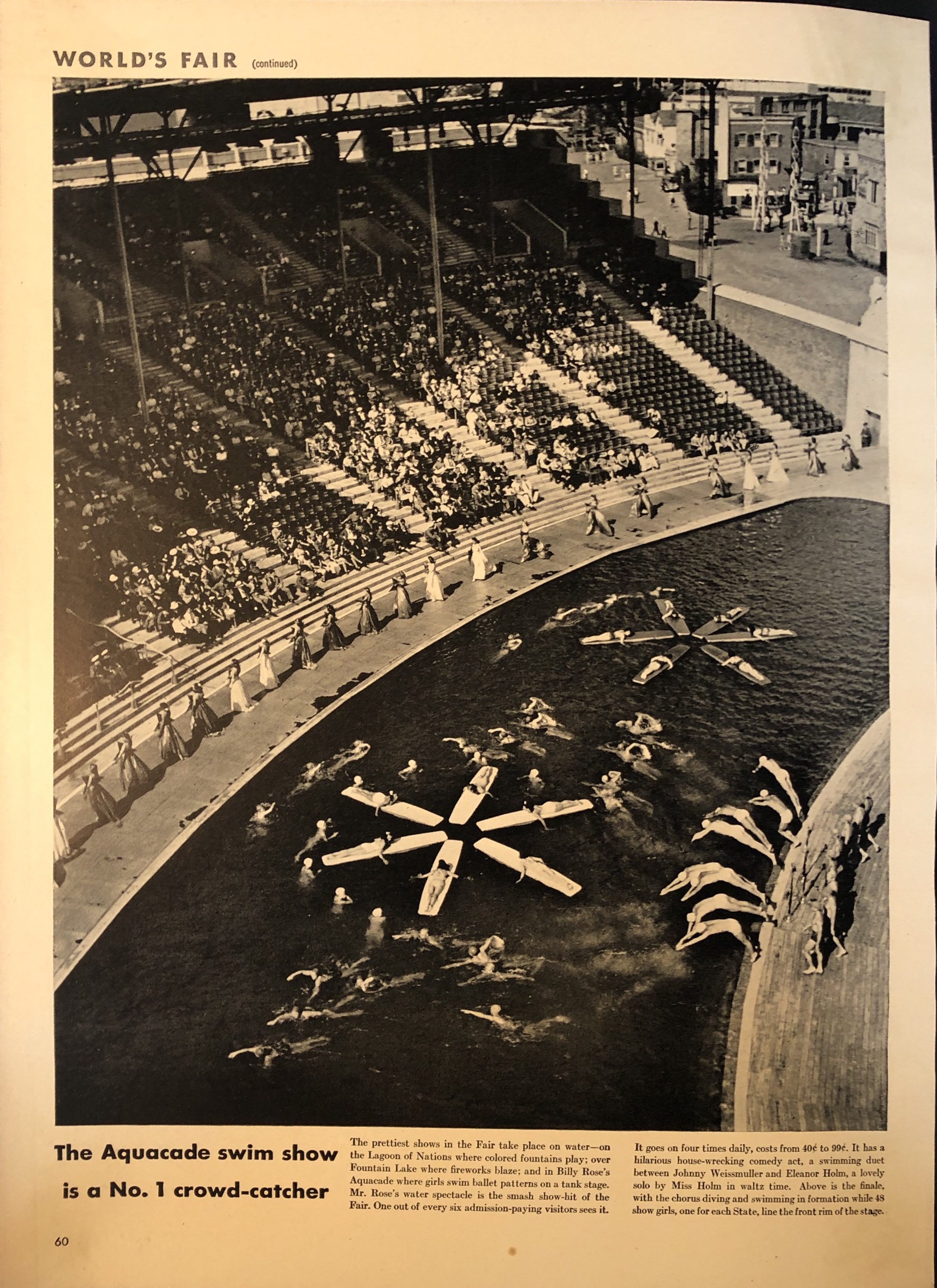
Photo of the Aquacade swim show by Walter Sanders for Black Star, reproduced in Life, 3 July 1939, p. 60 (Estate Walter Sanders, Photo: Helene Roth). 
“Life goes to The Futurama.” Image of the General Motors Show by Walter Sanders in Life, 5 June 1939, p. 79 (Estate Walter Sanders, Photo: Helene Roth). 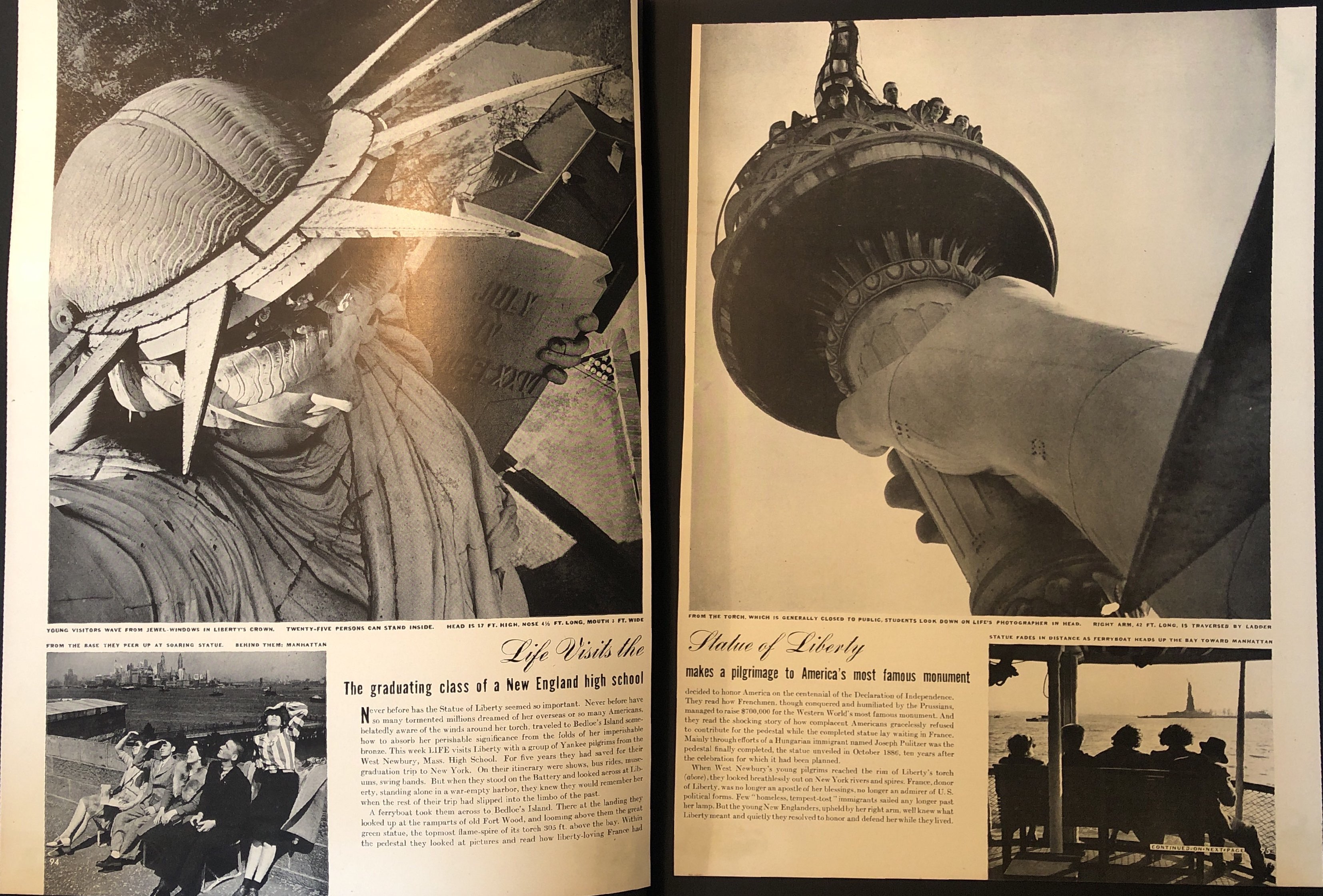
“Life visits Statue of Liberty.” Images by Walter Sanders published in Life, 2 June 1941, pp. 94–95 (Estate Walter Sanders, Photo: Helene Roth). 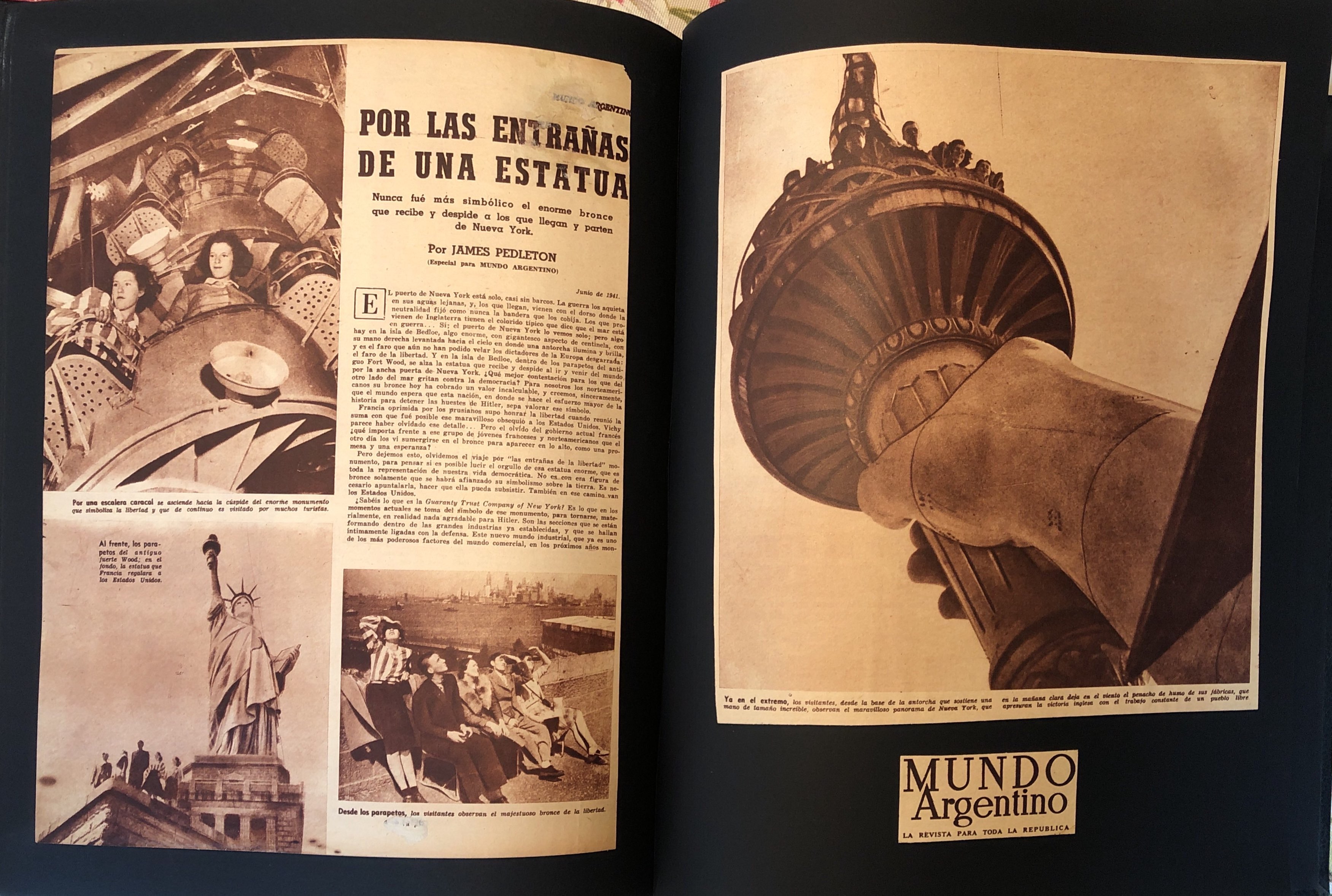
“Por las entrañas de una estatua.”. Images by Walter Sanders, MUNDO Argentino, June 1941 (Estate Walter Sanders, Photo: Helene Roth). 
“The Road Back to Berlin.” Images and text by Walter Sanders in Life, 10 November 1946, p. 29 (Estate Walter Sanders, Photo: Helene Roth). 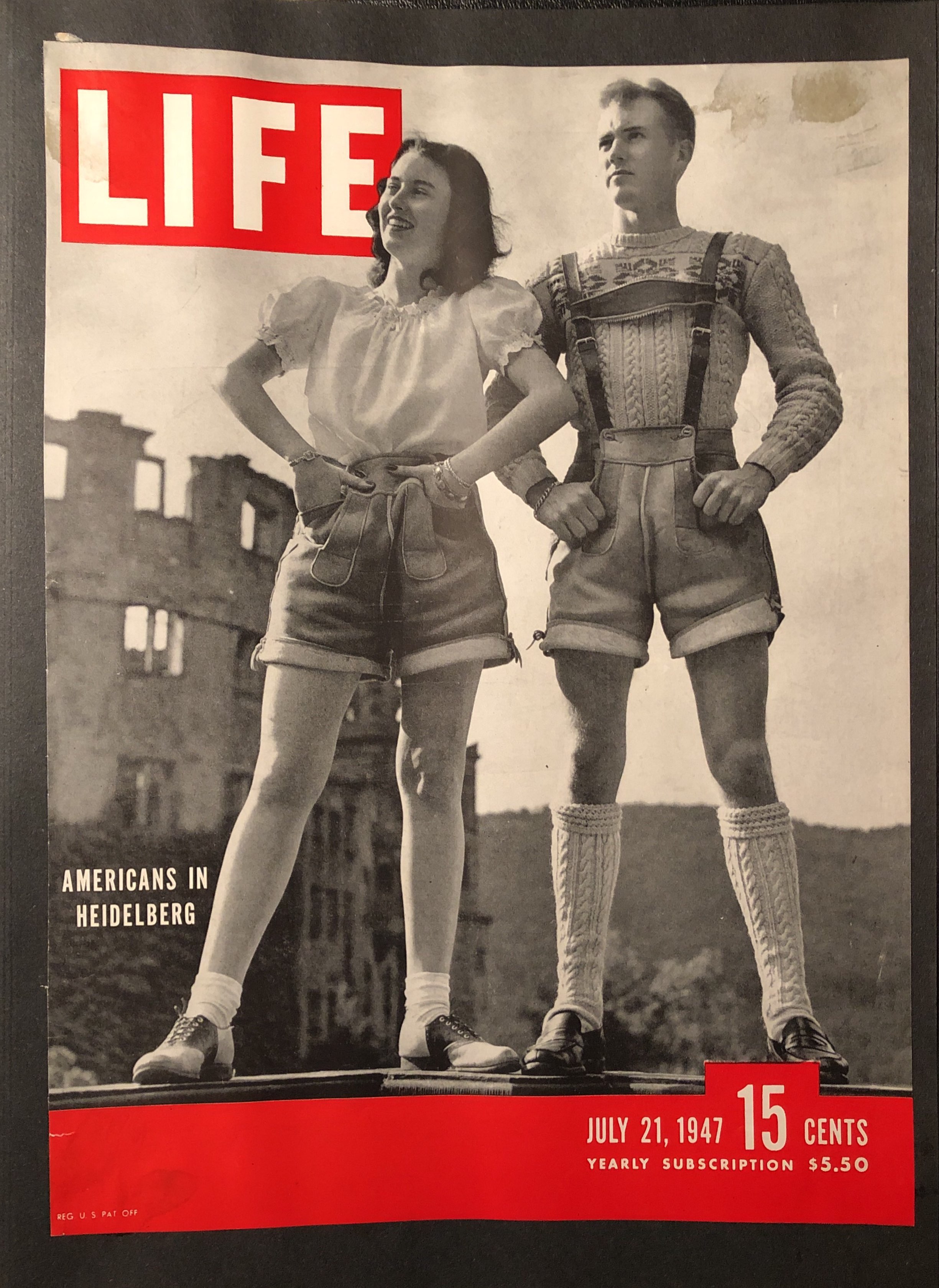
Americans in Heidelberg, Life cover, Image by Walter Sanders, Life, 21 July 1947 (Estate Walter Sanders, Photo: Helene Roth). Chapnick, Howard. Truth Needs No Ally. Inside Photojournalism. University Missouri Press, 1994.
Gilbert, George. The Illustrated Worldwide Who’s Who of Jews in Photography. G. Gilbert, 1996.
Kornfeld, Phoebe. Passionate Publishers. The Founders of the Black Star Photo Agency. University of Missouri Press, 2021.
Morris, John Godfrey. Get the Picture. A Personal History of Photojournalism. University of Chicago Press, 2002.
Pegatzky, Stefan. „Die Models sind unter uns.“ FAZ, 9 December 2019.
Sanders, Walter. “The Road Back To Berlin”, Life, 10 November 1946, pp. 29–33.
Schaber, Irme. “Fotografie.” Handbuch der deutschsprachigen Emigration 1933–1945, edited by Claus-Dieter Krohn and Patrick von zur Mühlen, WBG, 1998, pp. 970–983.
Schaber, Irme. “‘Die Kamera ist ein Instrument der Entdeckung…’. Die Großstadtfotografie der fotografischen Emigration in der NS-Zeit in Paris, London und New York.” Exilforschung. Ein internationales Jahrbuch, vol. 20: Metropolen des Exils, edited by Claus-Dieter Krohn et al., edition text + kritik, 2002, pp. 53–73.
Smith, C. Zoe. “Émigré photography in America: contributions of German photojournalism from Black Star Picture Agency to Life magazine, 1933–1938.” (unpublished dissertation, School of Journalism in the Graduate College of the University of Iowa, Iowa City, December 1983).
Smith, C. Zoe. “Black Star Picture Agency: Life’s European Connection.” Journalism History, vol. 13, no. 1, 1986, pp. 19–25.
Smith, C. Zoe. “Die Bildagentur ‘Black Star’. Inspiration für eine neue Magazinfotografie in den USA.” Kommunikation visuell. Das Bild als Forschungsgegenstand – Grundlagen und Perspektiven, edited by Thomas Knieper and Marion G. Müller, Herbert von Halem, 2001, pp. 240–249.
Word Count: 226
Black Star Archive. Ryerson Image Centre, The University of Toronto, Toronto.
Time Inc. Archive, New-York Historical Society, New York.
Walter Sanders Estate.
Word Count: 22
My deepest thanks go to Tim Freese, Frederike Fechner, Phoebe Kornfeld as well as the Ryerson Image Center for providing me with information and material on Walter Sanders.
Word Count: 28
New York, US (1938–1944); New York, US (1950–1961).
106 Fort Washington Avenue, Washington Heights, New York City (residence, 1938–1939); 351 West 34th Street, Garment District, New York City (residence, 1939–1941); 320 East 57th Street, Sutton Place, New York City (residence, October 1941–December 1944); 114 East 40th Street, Midtown Manhattan, New York City (residence, January 1950–1954); 60 East 96th Street, Carnegie Hill, New York City (residence, 1954–1956); 519 East 86th Street, Yorkville, New York City (residence 1956–1961); 947 Madison Avenue, Midtown Manhattan, New York City (workplace, Echo Inc., 1937–1939); 420 Lexington Aveneue, Midtown Manhattan, New York City (workplace, Black Star 1939–1961); Time-Life, Rockefeller Center, Rockefeller Center, Theater District, New York City (workplace, 1944–1961).
- New York
- Helene Roth. "Walter Sanders." METROMOD Archive, 2021, https://archive.metromod.net/viewer.p/69/2948/object/5138-7556025, last modified: 05-03-2022.
-
Kurt SafranskiPicture AgentFounding MemberTeacherCartoonistPublisherIllustratorNew York
Kurt Safranski was one of the founding members of the Black Star photo agency, a teacher at the New School for Social Research and the author of photojournalistic articles and books.
Word Count: 31
Andreas FeiningerPhotographerWriterEditorNew YorkAndreas Feininger, was a German émigré photographer who arrived in New York with his wife Wysse Feininger in 1939. He started a lifelong career exploring the city's streets, working as a photojournalist and writing a large number of photography manuals.
Word Count: 39
Ruth BernhardPhotographerNew YorkRuth Bernhard was a German émigré photographer who lived in New York from the 1920s to the 1940s. Beside her series on female nudes, her place in the photography network, as well as in the New York queer scene, is unknown and understudied.
Word Count: 43
Lisette ModelPhotographerNew YorkLisette Model was an Austrian-born photographer who lived in New York with her husband Evsa Model after emigrating from France. Her street photographs capturing the curiosities of everyday life quickly caught the interest of museums and magazines.
Word Count: 37
Fred SteinPhotographerLawyerNew YorkAlways accompanied by his camera, the German émigré photographer Fred Stein discovered New York City during the 1940s and 1950s. His pictures provide an human and multifaceted view of the metropolis.
Word Count: 31
Rolf TietgensPhotographerEditorWriterNew YorkRolf Tietgens was a German émigré photographer who arrived in New York in 1938. Although, in the course of his photographic career, his artistic and surrealist images were published and shown at exhibitions, his work, today, is very little known.
Word Count: 39
Ernest NashPhotographerArchaeologistLawyerNew YorkErnest Nash was a German born photographer, who pursued his photographic as well as an archeologic interest in Roman architecture after his emigration to New York in 1939. Besides this research interest, he also worked as a portrait photographer and publisher.
Word Count: 40
Ruth JacobiPhotographerNew YorkRuth Jacobi was a German-speaking, Polish-born photographer who emigrated in 1935 to New York, where she opened a studio together with her sister Lotte Jacobi. She later had her own portrait studio.
Word Count: 31
Lilly JossPhotographerNew YorkLilly Joss was an émigré freelance photographer in New York. She worked for the Black Star photo agency and magazines and was also a portrait and theatre photographer.
Word Count: 28
Fritz HenlePhotographerNew YorkFritz Henle was a German Jewish photographer who emigrated in 1936 to New York, where he worked as a photojournalist for various magazines. He also published several photobooks of his travels throughout North America and Asia.
Word Count: 35
Kurt KornfeldPublisherPicture AgentFounding MemberNew YorkKurt Kornfeld was a publisher and literary agent and a founding member of the Black Star photo agency in New York City after his emigration in 1936 to New York.
Word Count: 29
Ernest MayerPicture AgentFounding MemberPublisherNew YorkErnest Mayer was co-founder of the Black Star Publishing Company photo agency, which built a network for émigré photographers and the American magazine scene from the mid-1930s until the end of the 1950s.
Word Count: 34
Ruth StaudingerPhotographerCinematographerArt dealerNew YorkVery few and only fragmentary details can be found on the German émigré photographer Ruth Staudinger, who emigrated in the mid-1930s to New York City. Her nomadic life was also characterisedd by several changes of name along the way.
Word Count: 40
Carola GregorPhotographerSculptorNew YorkThe German émigré photographer Carola Gregor was an animal and child photographer and published some of her work in magazines and books. Today her work and life are almost forgotten.
Word Count: 30
New York World's Fair postcard View of the Constitution Mall looking toward statue of George Washington and Trylon and PerispherePostcardNew YorkShortly after the arrival in New York in 1939, photographs by the German émigré Ernest Nash were used and reproduced for postcards of the New York’s World’s Fair.
Word Count: 29
Black Star AgencyPhoto AgencyNew YorkThe German émigrés Kurt S(z)afranski, Ern(e)st Mayer and Kurt Kornfeld founded Black Star in 1936. The photo agency established was a well-run networking institution in New York.
Word Count: 31
SpiratonePhoto SupplierNew YorkSpiratone was a photo company and photo supplier founded in 1941 by the Austrian émigré family Hans (1888–1944) and Paula Spira (?–?) and their son Fred Spira (1924–2007).
Word Count: 24
Hermann LandshoffPhotographerNew YorkBesides outdoor fashion shots, Hermann Landshoff was a portrait and street photographer. During his time in New York, he captured the cultural, artistic and intellectual émigré scene as well as his photographer colleagues.
Word Count: 33
Josef BreitenbachPhotographerNew YorkOn arriving in New York in 1941, the German photographer Josef Breitenbach tried to restart as a portrait, street and experimental photographer, as well as a teacher of photo-history and techniques.
Word Count: 30
Marion PalfiPhotographerNew YorkMarion Palfi was a German émigré photographer who lived in New York from the 1940s to the 1960s. Her photographic engagement in social and political topics made her name for her use of the camera to draw attention to social injustices.
Word Count: 41
Lotte JacobiPhotographerNew YorkIn October 1935 the German émigré photographer Lotte Jacobi, together with her sister Ruth Jacobi, opened a photo studio on 57th Street. The two sisters had to leave their parents' photo studio in Berlin in the 1930s and emigrated to New York.
Word Count: 41
Vladimir BobritskyPainterScene DesignerGraphic ArtistMusicianIstanbulBobritsky worked at the Theatre des Petits Champs, where he successfully dealt with stage designs and costumes, at the same time he participated in the Union of Russian Painters in Constantinople.
Word Count: 31
Lilo HessPhotographerNew YorkThe German émigré Lilo Hess was an animal photographer working for the Museum for Natural History and the Bronx Zoo, as well being a freelance photographer and publisher of children's books.
Word Count: 31
YllaPhotographerNew YorkYlla was an Austrian-born photographer who emigrated to New York in 1941. Specialising in animal photography, she produced not only studio photographs, but also shot outside on urban locations in the metropolis.
Word Count: 31
Trude FleischmannPhotographerNew YorkTrude Fleischmann was an Austrian-Jewish portrait and dance photographer who emigrated in 1939 to New York, where she opened a studio in Midtown Manhattan with the photographer Frank Elmer.
Word Count: 28
New School for Social ResearchAcademy/Art SchoolPhoto SchoolUniversity / Higher Education Institute / Research InstituteNew YorkDuring the 1940s and 1950s emigrated graphic designers and photographers, along with artists and intellectuals, were given the opportunity to held lectures and workshops at the New School for Social Research.
Word Count: 31
LilliputMagazineLondonThe magazine Lilliput, founded by the émigré journalist Stefan Lorant in 1937, gave work to emigrated artists and photographers such as Kurt Hutton, Walter Suschitzky, Walter Trier and Edith Tudor-Hart.
Word Count: 29